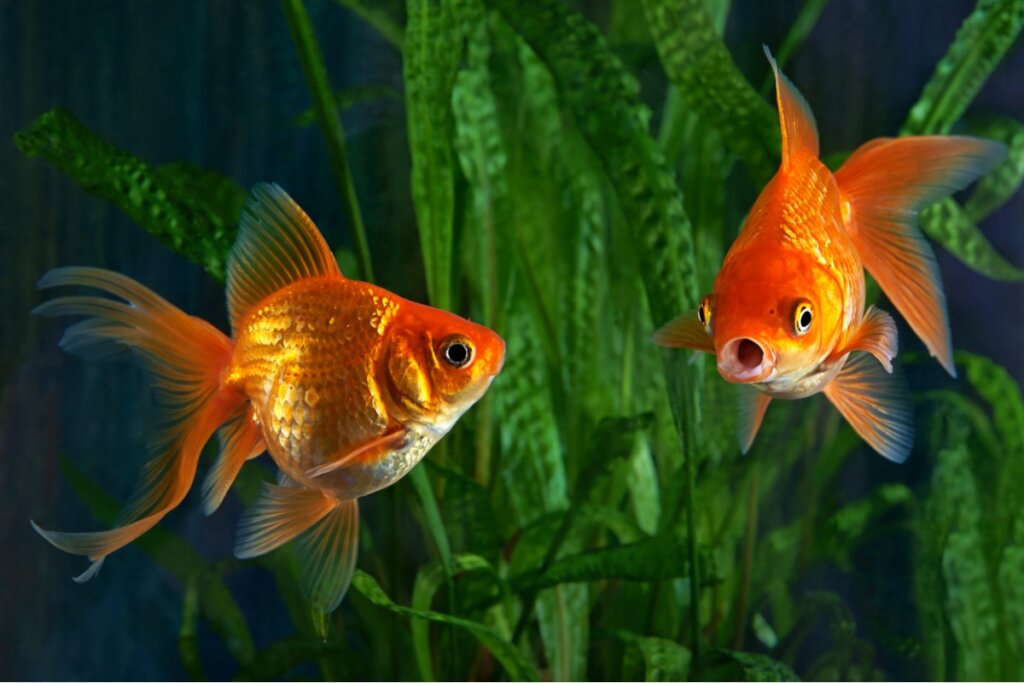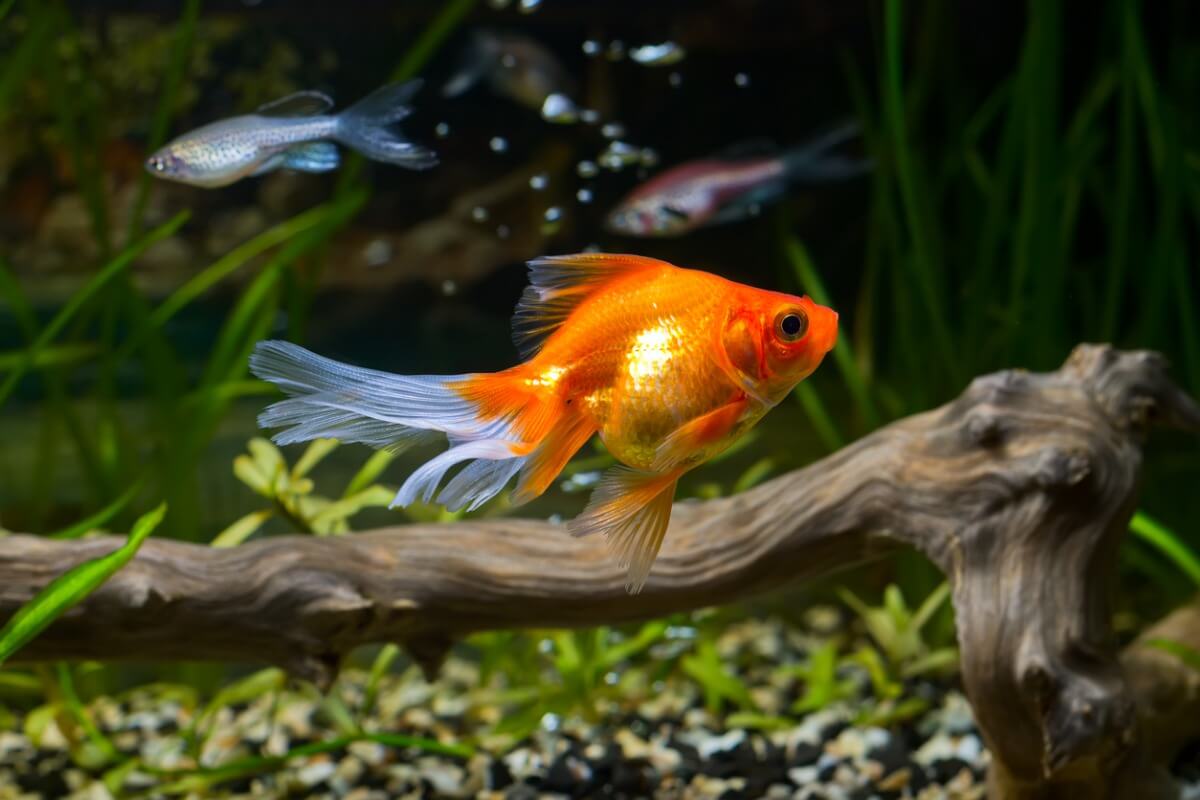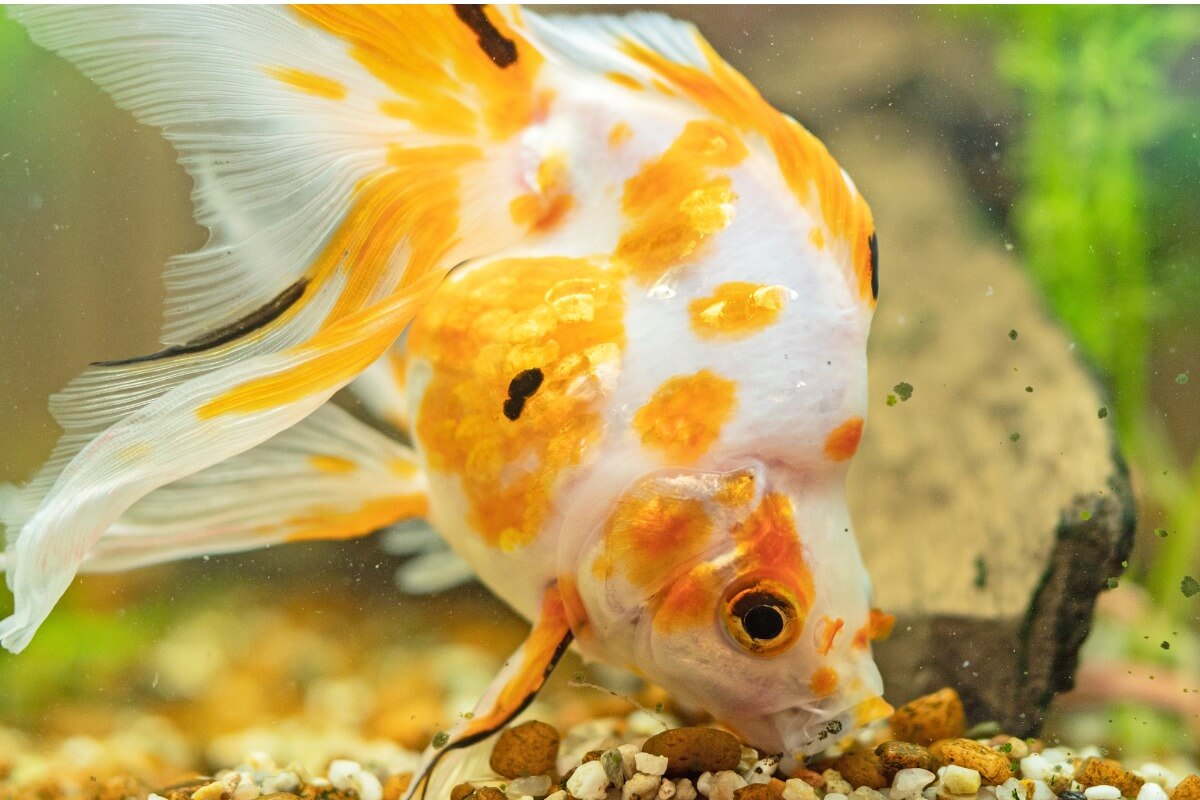Why Is My Goldfish Aggressive?

The goldfish is one of the most popular fish among enthusiasts, as it’s adaptable and resistant to different types of water conditions. It’s often thought that they’re quite peaceful creatures, as they coexist very well with certain types of fish. However, certain conditions and situations can make goldfish aggressive. Find out what they are here!
The scientific name of this species is Carassius auratus and it groups together a large number of beautiful and different varieties. The following article will focus on the most pertinent issues in common goldfish although much of the information can be applied to the other variations of the species. Read on and discover what can make goldfish aggressive.
What does the goldfish look like?
This well-known fish is characterized by yellow-orange colorations that closely resemble golden hues. The normal size of these organisms is between 15 and 20 centimeters long (6 to 8 inches), although they can reach 40 centimeters (16 inches) with proper care. Being close relatives of the carp, it’s natural that they’re able to grow so much.
On the other hand, the fins of this species tend to conform to a certain size and it doesn’t exhibit exuberant modifications. The dorsal fin is usually in the form of a crest, which is elongated from the middle of the body to the tail. Also, the caudal fin is long and shows a typical “V” appearance that facilitates locomotion.
In general, this fish is usually an excellent choice to start an aquarium, as it’s very peaceful with its own species. However, under certain circumstances, the goldfish can show aggressive behavior that can end in death.

Aggressiveness in goldfish
This species doesn’t usually bother or attack other companions, as they normally love to socialize. Despite this, under certain circumstances, they may even attack other members of the aquarium. Therefore, if your goldfish is aggressive towards other fish, it’s almost certainly due to one of these factors:
- The mating season
- Space in the tank
- The amount of food
Goldfish mating
Goldfish mating takes place in summer, when the water temperature is between 18 and 22 °C (64 to 71 °F). At this time the male is aggressive, pushing the female several times to make her release her eggs and fertilize them. Although it may seem strange, this behavior is normal and necessary for their courtship.
This whole process is regulated by a complex system of pheromones, with which the female incites the male to be violent. According to research carried out by the German Research Institute, these fish become more aggressive when they’re exposed to androstenedione. This compound is a hormone released by females during ovulation.
If conditions are favorable, and you have at least one pair of goldfish in your aquarium, then it’s likely that the reason for their aggressiveness is due to it being the mating season. Even so, remember that this behavior should stop after spawning, so if your pet continues behaving this way it could mean it has another problem.
The right space for goldfish
Another reason why this fish can become aggressive is to do with the space inside the tank. Although specimens are usually sold in small tanks of just a few liters of water, an ideal aquarium for this fish should have a minimum volume of 60 liters. Thus, the appropriate size for keeping a pair of goldfish is 120 or 150 liters.
Although it may not seem so obvious, the size and decoration of the aquarium affect the health of the fish too, as it increases or decreases their amount of stress. In other words, by not having an adequate habitat, the specimens start behaving more nervously, which can lead to aggressive behavior.
It is important to take into account the basic needs of the fish, as this can prevent conflicts in the future. In addition to this, the behavior of a single individual in the aquarium can end up stressing or killing the others, so don’t let the situation pass you by.
Round bowls are strongly discouraged for this species.
Goldfish feeding
These fish cope quite well when food is scarce. However, when faced with a lack of nutrients they’ll start looking for any alternative food source, and they won’t hesitate to eat smaller fish. This means that if you don’t give them an adequate food ration, your fish may attack or prey on others.
This situation is easy to avoid if you follow the basic recommendations for caring for goldfish, as this will prevent their voracious appetite from killing other fish. A goldfish usually eats two or three times a day and it’s best to stick to this diet to keep it healthy.
What species are goldfish compatible with?
One way to avoid any kind of conflict with your fish is to check their compatibility, as this will rule out aggression and problems in the aquarium. In the case of goldfish, it’s usually enough to take into account two aspects: the size of the fish and their aggressiveness.
If their companions are smaller than this fish, they could fall victim to their voracious appetite. On the other hand, if they’re aggressive, the goldfish will be affected. It’s important to reduce the risk to a minimum, so here are some fish that are compatible with this beautiful specimen:
- Algae-eating fish(Plecostomus and Ancistrus)
- Koi fish
- Catfish
- Corydoras
Compatibility depends a lot on the size of the animal. A goldfish hatchling will be preyed upon by almost any large omnivorous or carnivorous fish.

Goldfish aggressiveness is due to poor care
Under certain conditions, calmer species can become aggressive. This applies to almost all living beings, because if their life in captivity isn’t adequate, then all animals will show conflictive behavior. If you have any questions about your fish’s health, then go to an animal health professional to determine the exact cause of their temperament.
In addition, before buying any pet you should make sure you have everything you need in order to ensure the best quality of life possible. Remember that these animals can’t take care of themselves, so they’ll depend on you to survive. Not just anyone can cope with this responsibility, but rest assured that the effort will be rewarded.
All cited sources were thoroughly reviewed by our team to ensure their quality, reliability, currency, and validity. The bibliography of this article was considered reliable and of academic or scientific accuracy.
- Thompson, R. R., & Walton, J. C. (2004). Peptide effects on social behavior: effects of vasotocin and isotocin on social approach behavior in male goldfish (Carassius auratus). Behavioral neuroscience, 118(3), 620.
- Sorensen, P. W., Pinillos, M., & Scott, A. P. (2005). Sexually mature male goldfish release large quantities of androstenedione into the water where it functions as a pheromone. General and comparative endocrinology, 140(3), 164-175.
- Mohammadi, M., & Jafari, S. (2014). An expert system for recommending suitable ornamental fish addition to an aquarium based on aquarium condition. arXiv preprint arXiv:1405.1524.
- Poling, K. R., Fraser, E. J., & Sorensen, P. W. (2001). The three steroidal components of the goldfish preovulatory pheromone signal evoke different behaviors in males. Comparative Biochemistry and Physiology Part B: Biochemistry and Molecular Biology, 129(2-3), 645-651.
- Copa Yujra, C. A. (2011). Evaluación del crecimiento de tres variedades de peces Goldfish (Carassius auratus) en agua fria bajo condiciones controladas (Doctoral dissertation).
- González Valladares, J. C. (2014). Sustitución con polen en la alimentación de peces Goldfish (Carassius auratus) en la etapa de levante (Doctoral dissertation, Universidad de San Carlos de Guatemala).
